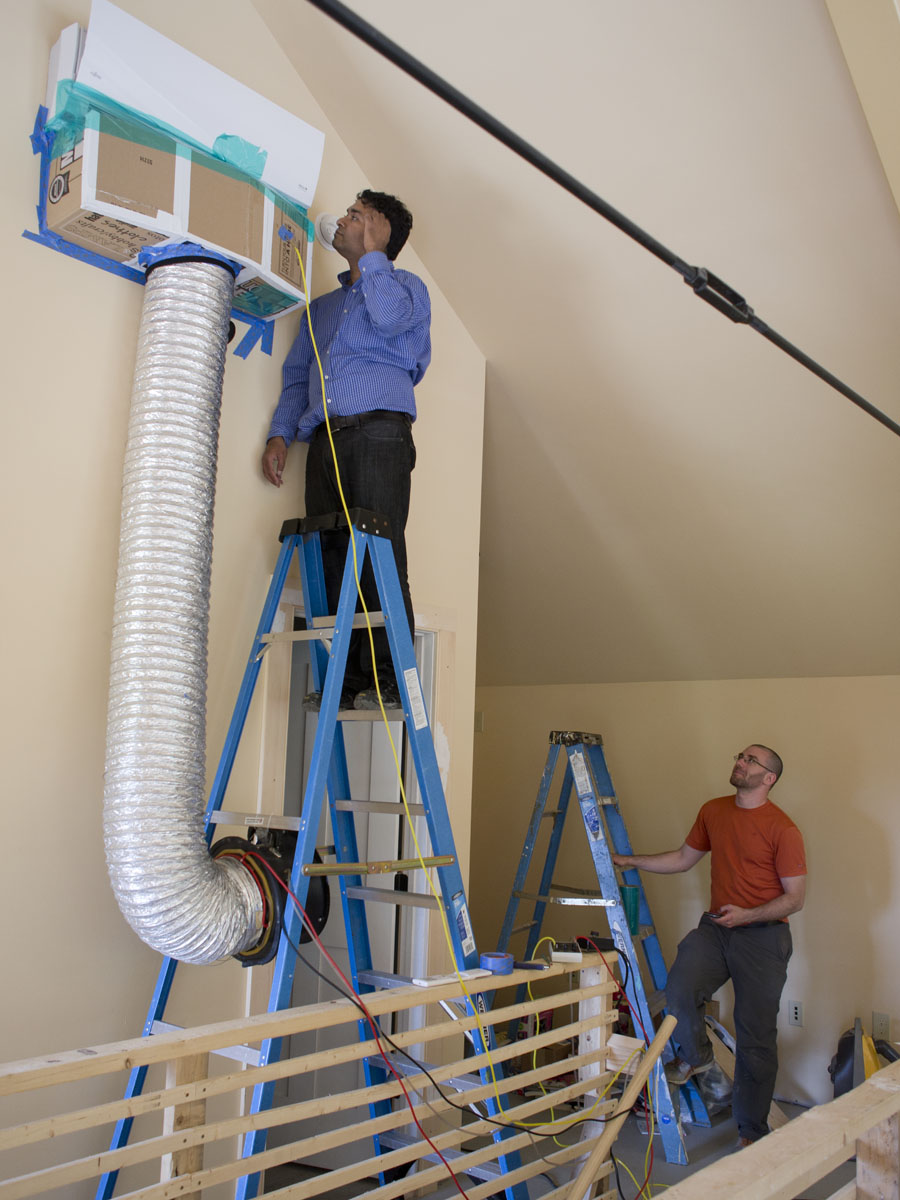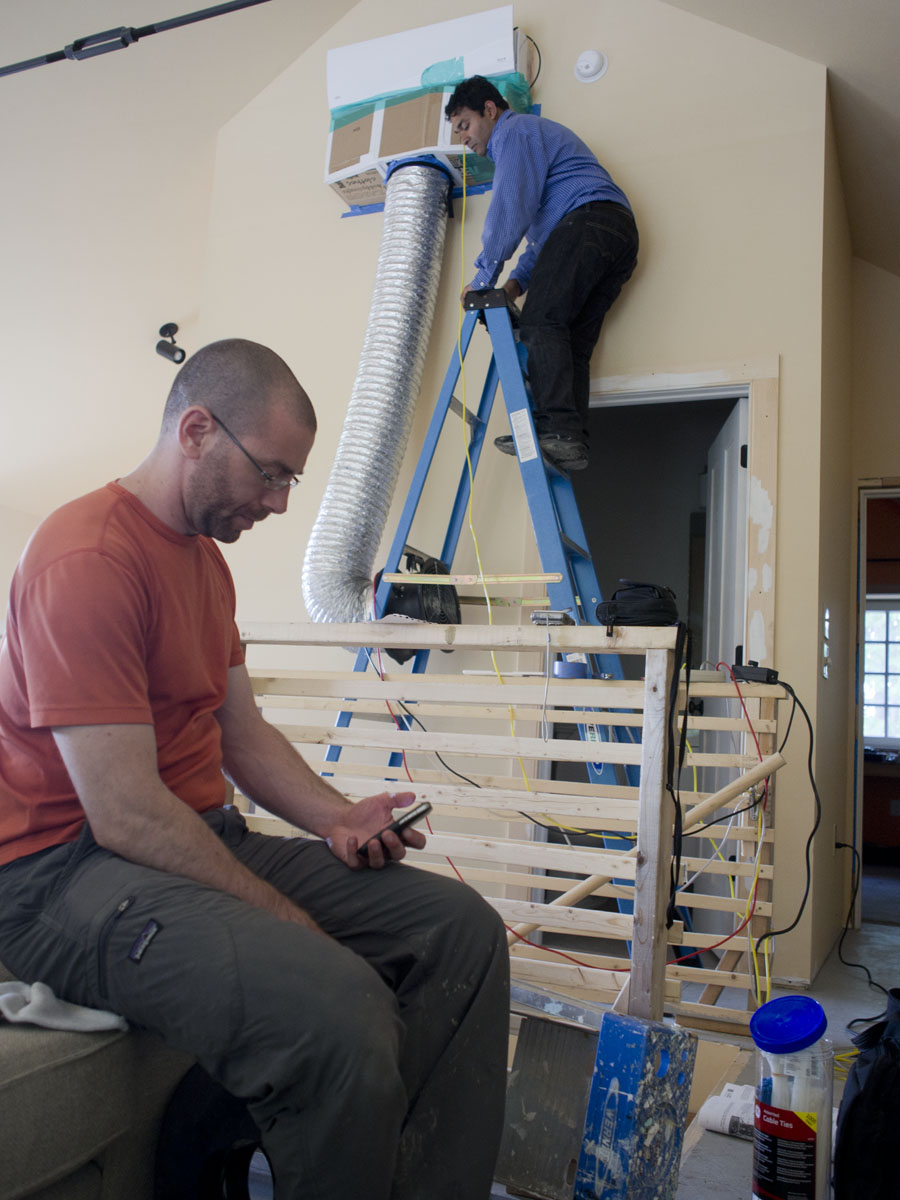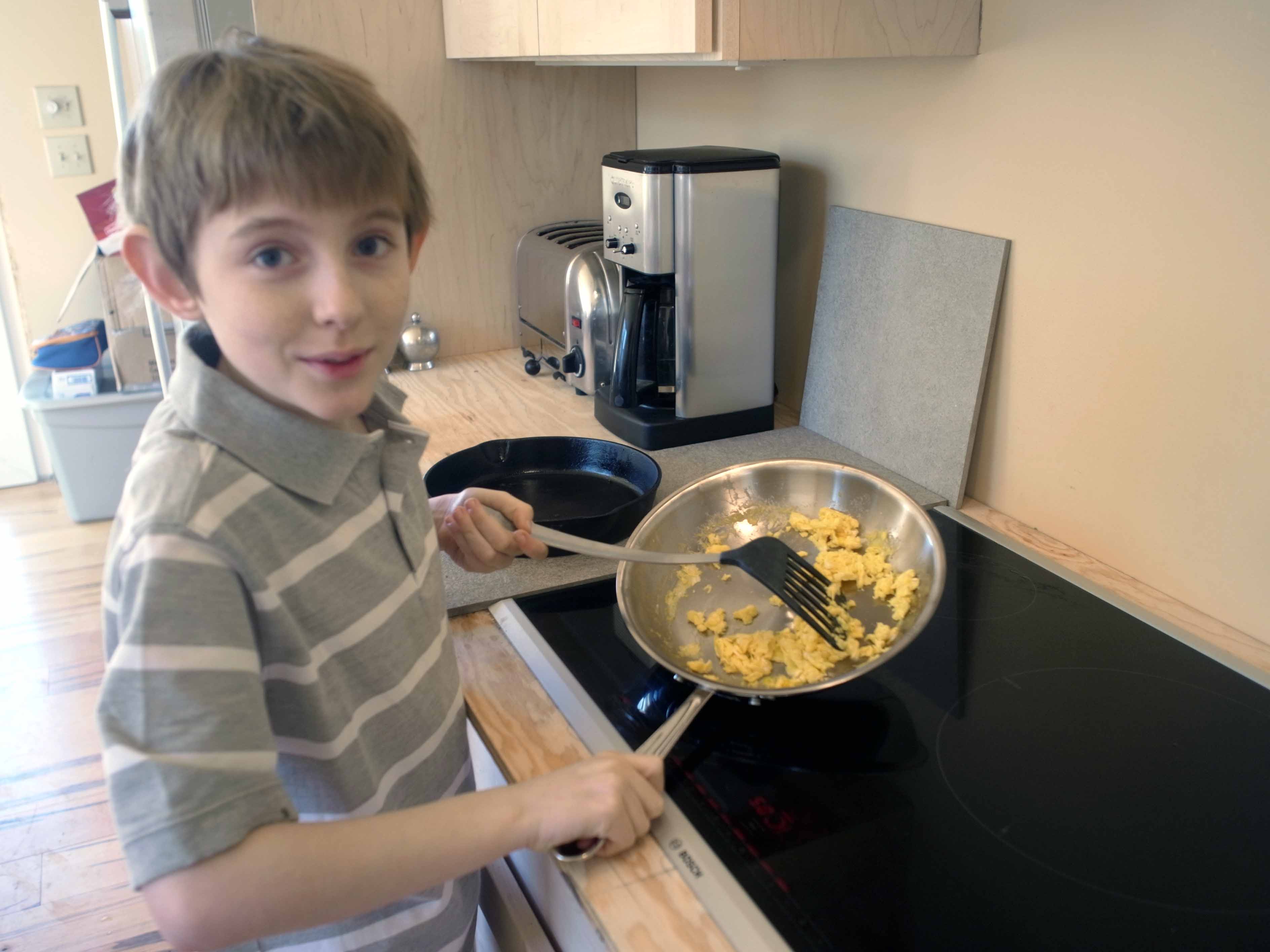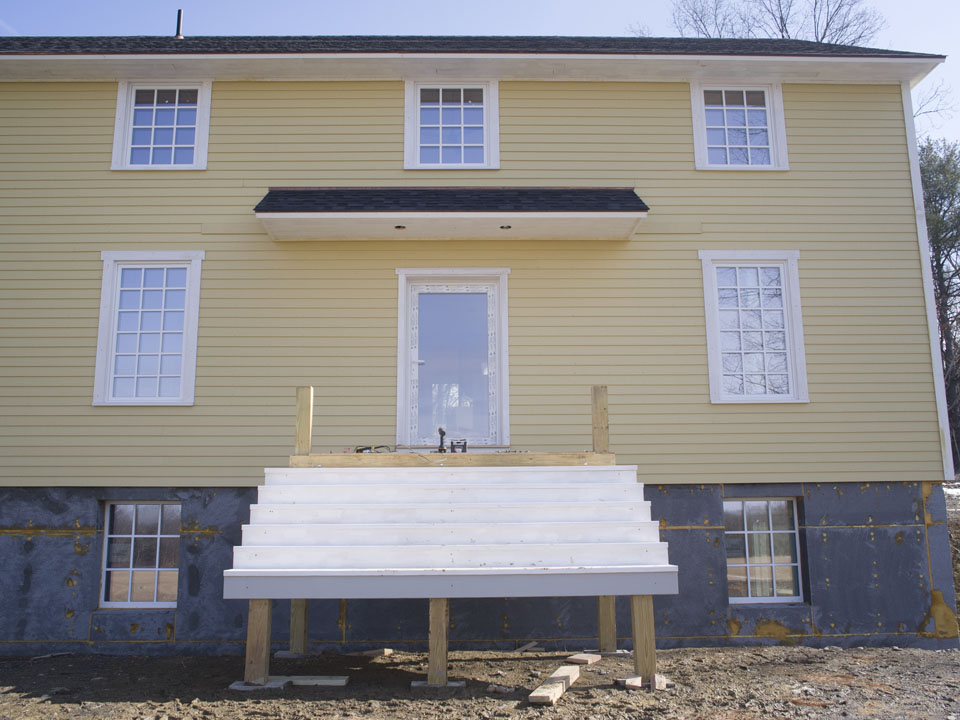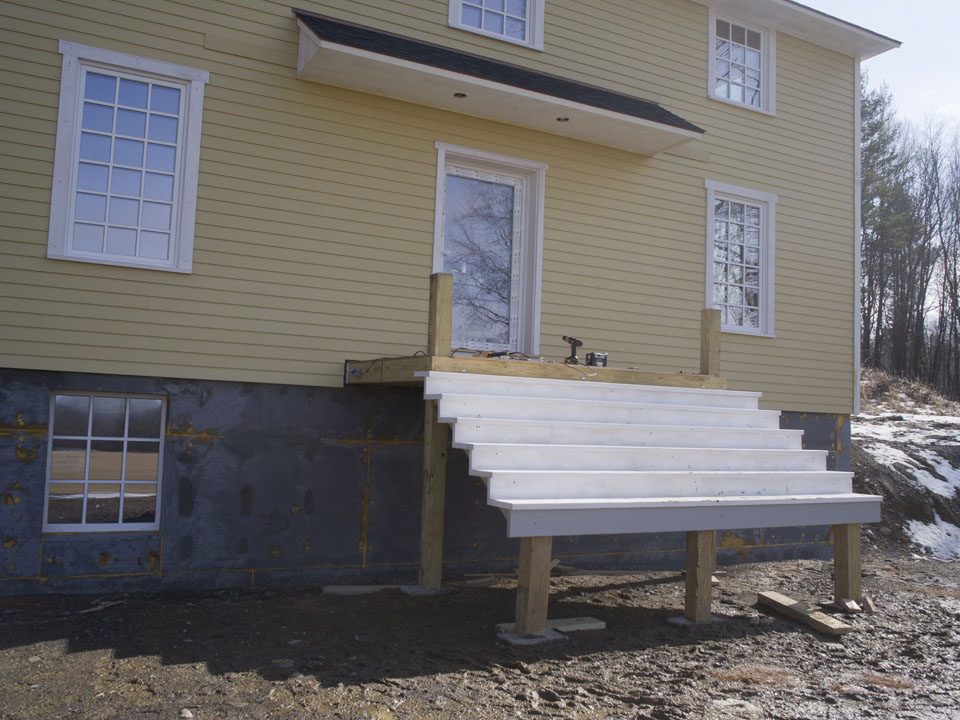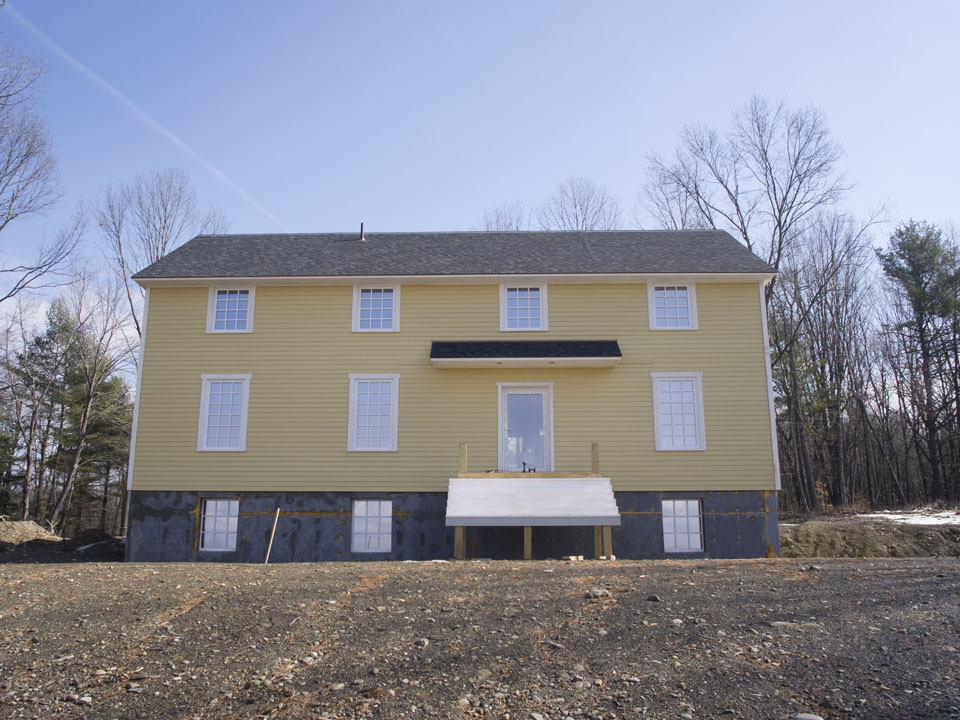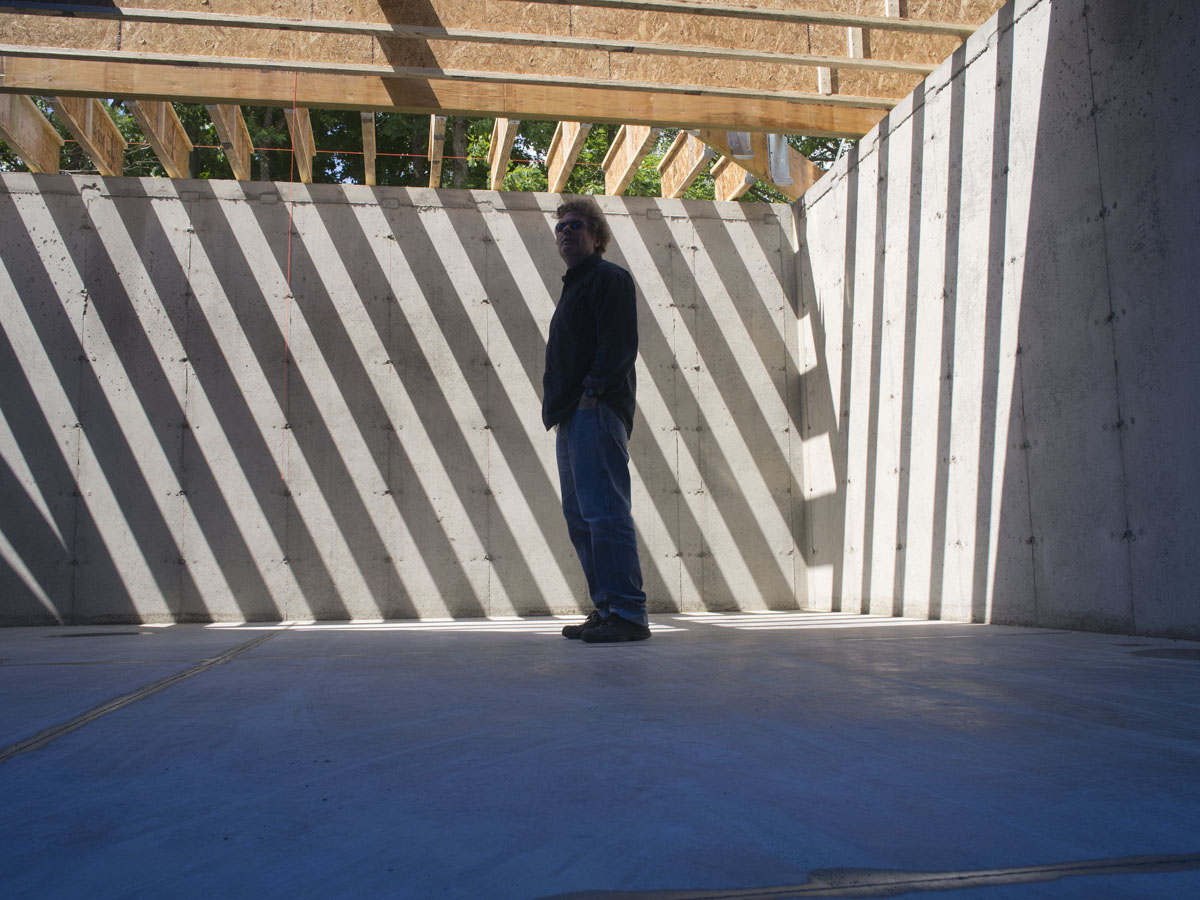
 “Before” in June 2012. “After” in November 2013. Our house is designed for live and work, and it works very well. The studio is in the only cave-like area of the lower level, perfect for light control. It’s where Chris creates illustrations for sale on Getty Images.
“Before” in June 2012. “After” in November 2013. Our house is designed for live and work, and it works very well. The studio is in the only cave-like area of the lower level, perfect for light control. It’s where Chris creates illustrations for sale on Getty Images.
Category Archives: 4. Interior
Monitoring our heat pump
We passed the test at 0.3 ACH

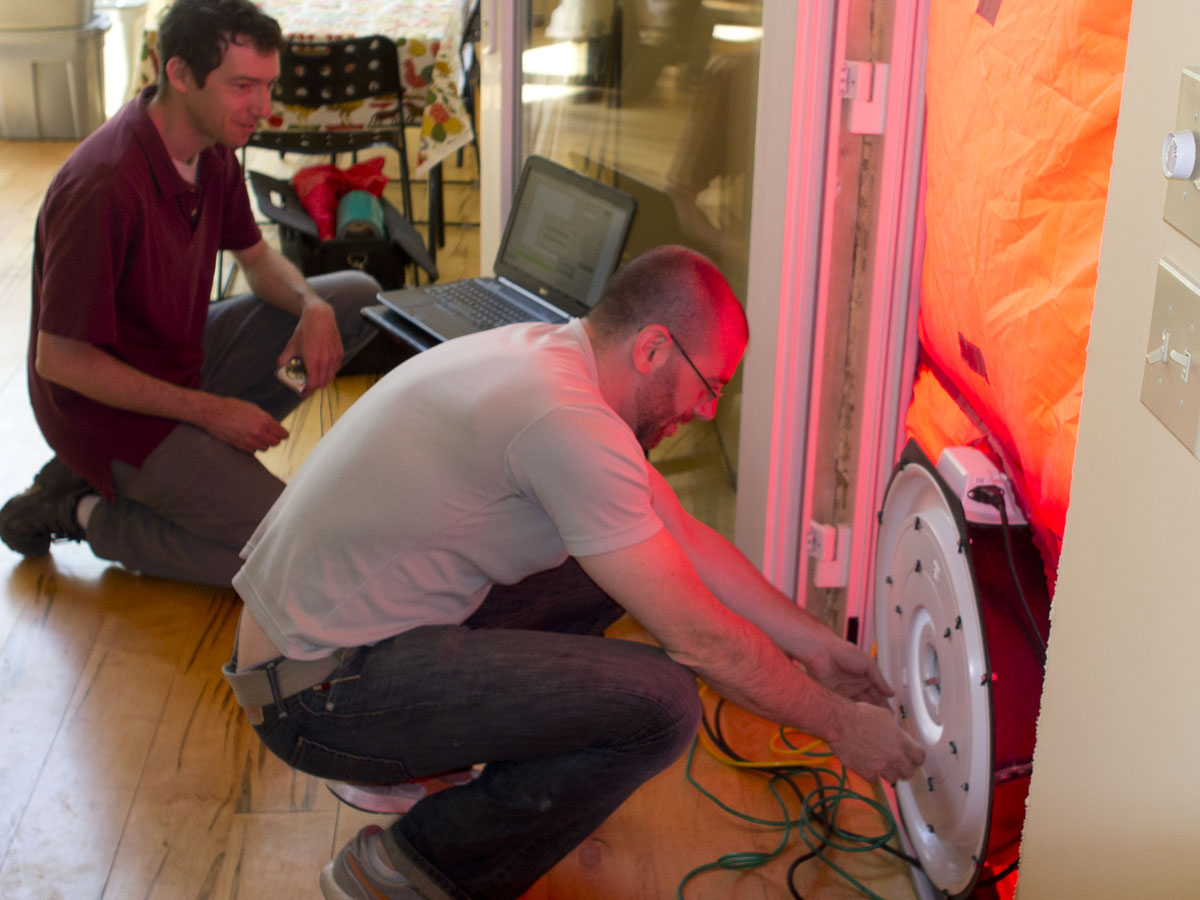

 Jordan Dentz and Dave from The Levy Partnership, along with Greg Pedrick and Nathan Russell from NYSERDA, monitor our final blower door test for Passive House certification. Read more about blower door tests here and here.
Jordan Dentz and Dave from The Levy Partnership, along with Greg Pedrick and Nathan Russell from NYSERDA, monitor our final blower door test for Passive House certification. Read more about blower door tests here and here.
Tuesday, May 7, 2013: The house was filled with brainy building science and energy experts from The Levy Partnership, NYSERDA Building R&D and CDH Energy. One team performed the blower door test, which scored 0.3 air changes per hour (ACH), exceeding the Passive House standard of 0.6 ACH. Another team set up the equipment that will monitor our energy use for the next year.
The blower door test is the key to certification. We are applying through the Passive House Academy, which is accredited by the Passivhaus Institut to provide a global Passive House Certification service.
The whole Passive House movement (that’s Passivhaus in German) is quite new here in the United States, so we volunteered to be energy Guinea Pigs and now there are little black boxes on the walls and wires sticking out of the heat pump. The data will address a number of research questions: How much energy does a Passive House use and how does that compare to homes built to current building code? How do the predictions about energy use made by the planning software compare to real life? Do the mini-split heat pumps and HRV perform like they are supposed to?
A grant from the NYSERDA High Performance Development Challenge is what brought all of this expertise to our particular Passive House, thanks to previous experience at the Barlis Wedlick project in nearby Claverak. While entire walls can be purchased ready-made in Europe that meet the Passive House standard, it’s not so common here, and it’s reassuring to have the experts confirm that our house is up to snuff, technically speaking.
First food with induction cookware
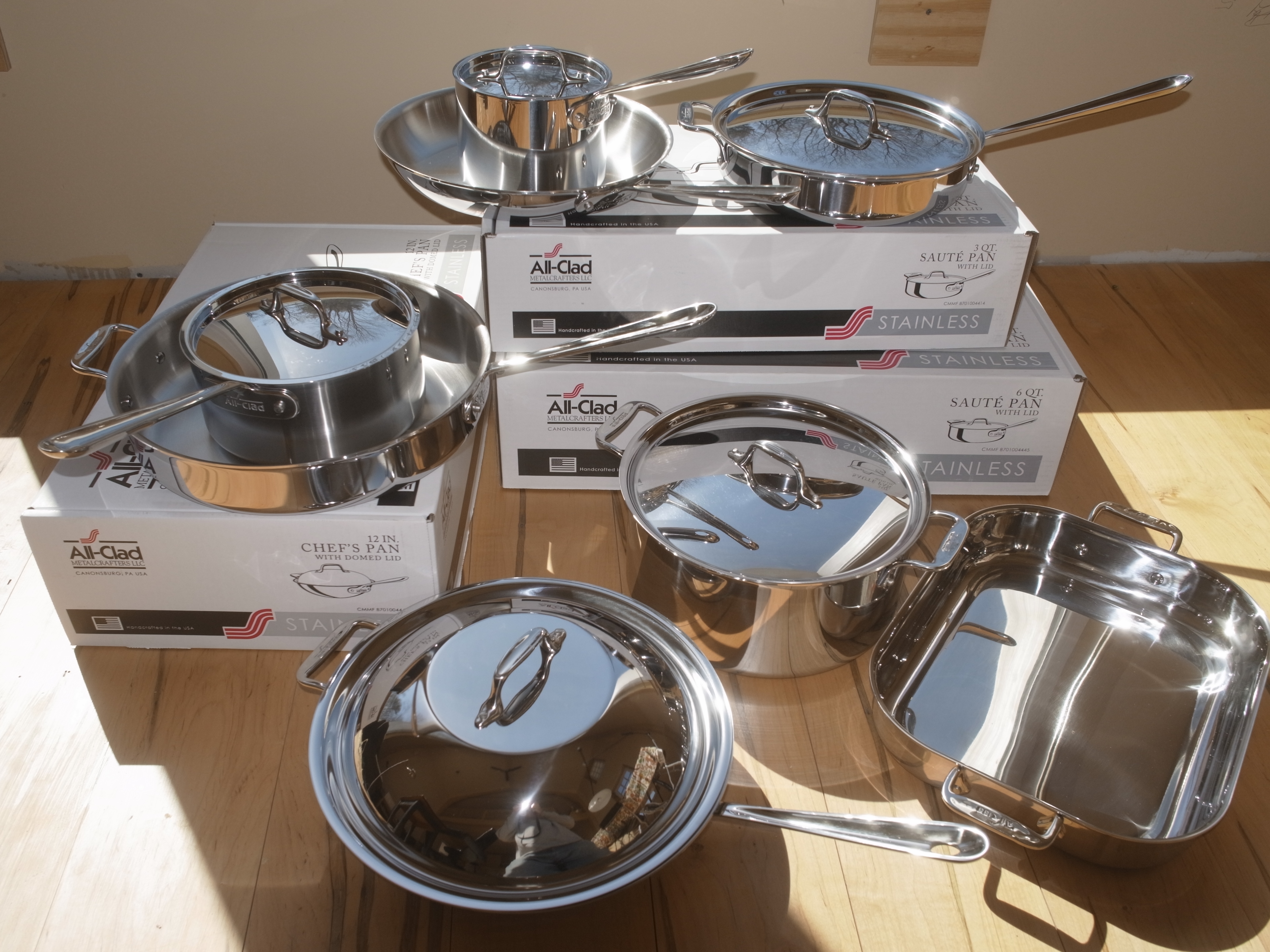 Here is a video about how induction works >
Here is a video about how induction works >
Straight from the box, the new induction-safe frying pan is put to the test by Nicholas. It’s April 4th, the day we broke ground one year ago, and he’s thrilled to be the first to use the new pots and pans. Because we have a new induction cooktop, we needed to buy new cookware that is magnetic and has a very flat bottom. Our four old and somewhat lumpy non-magnetic stainless pots had to be replaced. We choose All-Clad Tri-Ply Stainless Steel (without the non-stick coating), hoping they last forever. Less pricey Tramontina Tri-Ply receives rave reviews, and cast iron also works very well.
The smooth and shiny black ceramic cooktop is quite a change from our Viking dual fuel range. Induction cooking uses the transfer of magnetic energy, rather than a flame or electric element, to create a quick and efficient way of cooking. Water boils almost instantly, pots stay mostly cool and temperature is easily controlled. A typical induction cooktop is 84 percent efficient, while a gas range is only 40 percent efficient, according to the U.S. Department of Energy.
Installing kitchen cabinets and appliances
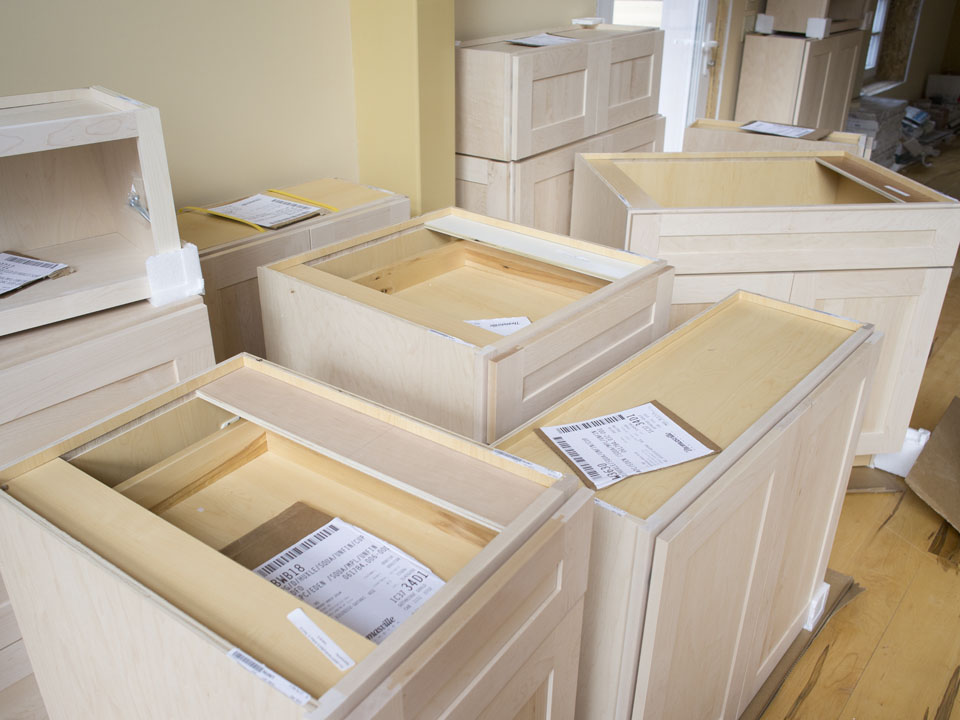
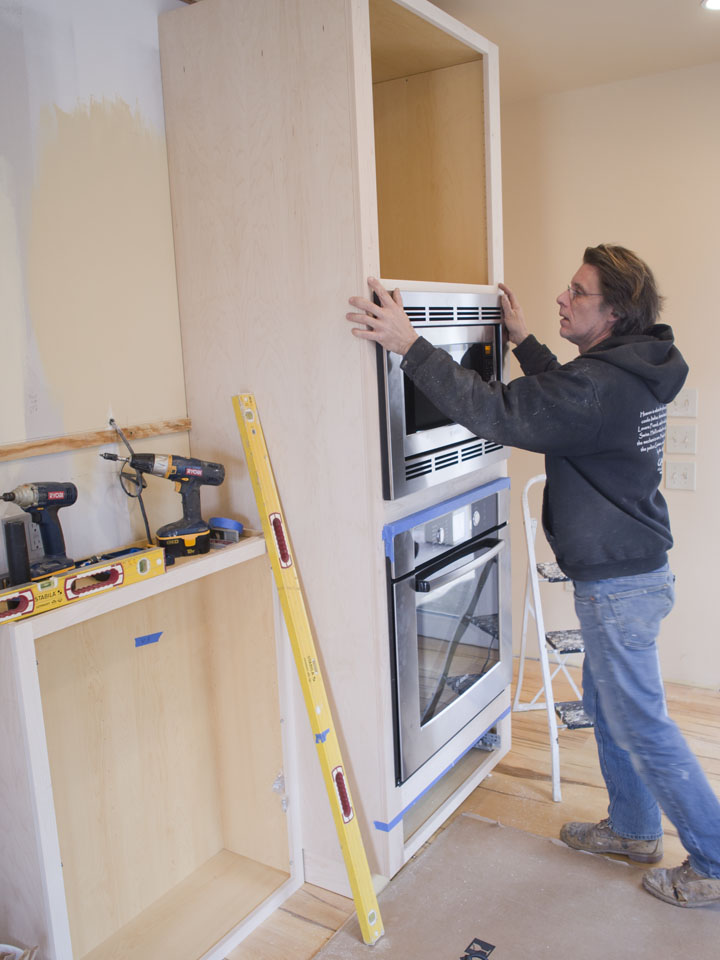
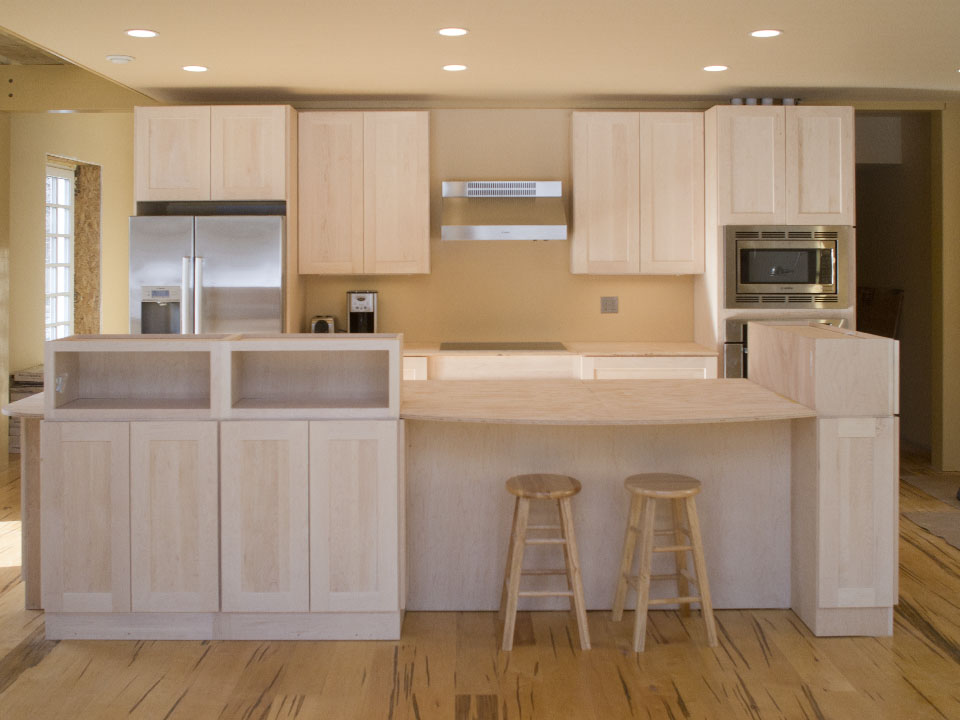
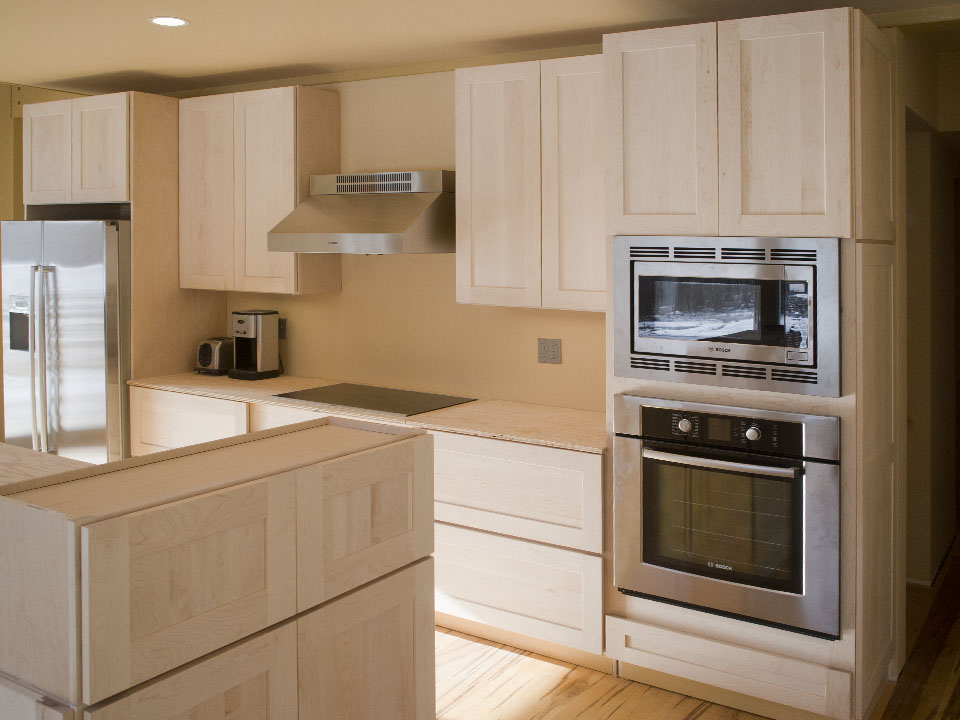 The cabinets will be painted in place, matching the color of the beams. The island countertop will be fabricated from the same local wormy maple that is on the floors. We’ll repeat the grey tile used elsewhere for the countertop by the induction cooktop and the wall behind it. One missing cabinet above the stove vent is on re-order from Thomasville, which participates in an environmental stewardship program (though our main motivation was finding unfinished cabinets in a rush!).
The cabinets will be painted in place, matching the color of the beams. The island countertop will be fabricated from the same local wormy maple that is on the floors. We’ll repeat the grey tile used elsewhere for the countertop by the induction cooktop and the wall behind it. One missing cabinet above the stove vent is on re-order from Thomasville, which participates in an environmental stewardship program (though our main motivation was finding unfinished cabinets in a rush!).
Making progress on West stairs
Kitchen cabinets
The Bosch appliances have arrived
 The refrigerator is our first kitchen appliance to be unboxed and plugged in.
The refrigerator is our first kitchen appliance to be unboxed and plugged in.
 The passive house plan requires ventless clothes dryers. Individually, they are too small for our family of four. We have installed two dryers with matching washers to handle the volume.
The passive house plan requires ventless clothes dryers. Individually, they are too small for our family of four. We have installed two dryers with matching washers to handle the volume.
Bathroom floor and tile
The grey tiles are stone-like and, according to the store display, eco-friendly. I haven’t done the research to find out why or how they merit their green label. They were on sale and to be discontinued, so we ended up with several free boxes that will soon be used in the kitchen. The big white subway tiles for the children’s shower were in the closeout room and way more economical (and fun) than the smaller size we had intended to use. Chris has done all the tile work himself, a first-time experience with this craft.

